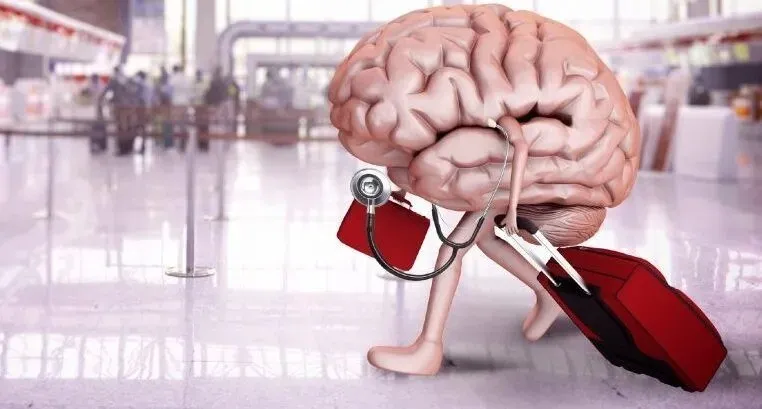
Escape of Non-Artificial Intelligences
human identity is the most important social variable and the greatest existing value, as well as the most significant factor influencing the value creation chain. Replacing it may seem simple but is very difficult, if not impossible, at critical points. Therefore, we must do our utmost to prevent the cheap or even free export of our society’s values. Today, this is our most important mission.
Yes, skilled human resources are migrating.
We have talked, read, and written a lot about artificial intelligence. We have posted on social media, liked its posts, created podcasts, listened to podcasts, shared news about it, and got so immersed that we forgot which intelligence invented artificial intelligence, who applied it, and made it available as an efficient tool for various social-economic classes in society. It was humans — the scientist, the expert, the concerned human being; the identity called human.
We must face the reality that in the information age, even in the fourth industrial revolution and with the widespread influence of artificial intelligence on human life, the human remains the most important variable in society. It is human identity that shapes development structures, creates technology, utilizes artificial intelligence, generates value, and ultimately binds the pillars of a society together. That is why organizations refer to their human resources not just as assets but as their most valuable capital. We have seen inspiring speeches and great leaders proudly extol their organization’s greatest asset — their human workforce — often with many motivational phrases. But let’s focus our eyes a little more sharply and look a little further ahead. The modern management perspective on human resources is different. In modern management, human resources are neither mere assets nor organizational capital; they are partners of the organization. Members of an organization, without necessarily holding legal shares, undoubtedly benefit from its profits and also feel its losses. They are the most powerful and influential stakeholders who can affect the organization's profit and loss with fixed costs. This partnership is founded not only on economics but also on intangible assets such as hope, motivation, creativity, knowledge, and progress.
So why should an organization export its specialists to other countries without a win-win agreement? This question reveals a dark and vague picture of the one-way migration of skilled workers — a serious challenge particularly acute in many sectors of our society, especially health care.
Are we exaggerating?
Migration is not an issue that requires official news to be noticed. Migration starts from our homes and organizations. Professionals in the health sector across various branches — from diagnosis and treatment to pharmacy, education, research, and even governmental oversight — are confronted with a widespread wave of migration. This migration is not merely the physical act of moving. The very thought of migration affects the focus, motivation, and hope of specialists. When an individual sees themselves detached from their organization or at best a temporary guest for a day or two, organizational learning and development lose their place and become an expensive, even unattainable ideal.
Certainly, migration exists in all countries. It is recognized as a tool for knowledge and cultural exchange. But what we are concerned with is the one-way movement of specialists out of the country without replacement — a concerning challenge in any social context. That is, the exit of specialists without the entry of substitutes.
Managers and policymakers also consider the departure of this skilled and experienced workforce one of the main obstacles to development in the health sector. Moreover, the migration of non-specialized laborers is a growing challenge in some health-related manufacturing industries, such as the pharmaceutical sector.
Research findings
It might be useful to compare our empirical knowledge with quantitative research results. According to a study by the Strategic Analysis and Pharmaceutical Market Research Group, the human resources in the health industry have been able to deliver 75% of the expected quality in the field, with an importance coefficient of 0.789. This means the existing workforce plays a significant role in development and is considered a strategic strength (Point A in Figure 1).
However, the current widespread migration is considered a serious threat with a power of 22.5% and an importance coefficient of 0.84, shown as Point B in the same chart. This issue reduces the score and strategic importance of human resources, indicating their real position in the gray area. Simply put, the specialists we theoretically pride ourselves on are now on a path where they neither have the strength to confront challenges nor does anyone count on them. This is the alarm bell signaling an uncertain future we cannot face empty-handed.

Is there a solution?
In my opinion, criticism must lead to solutions. Therefore, I propose a few initial suggestions to confront this challenge. Although comprehensive strategies require more in-depth and specialized studies beyond this short article:
- Reforming macro-level management policies
Macro decisions directly impact all country infrastructures. When welfare, economic development, and social security become priorities in macro policies, organizations will also move along this path. This alignment among different organizations can create added value and increase efficiency in achieving common goals. But if the macro approach of a country does not align with the objectives and needs of its organizations, this disagreement is like swimming against the current. How can a country that considers economic and security challenges a divine gift for showing power and distinction plan for the welfare and comfort of its people? - Focusing on the human workforce issue
The first step in solving a complex issue is to understand its dimensions accurately. Migration is a multidimensional phenomenon requiring social, economic, and psychological analysis. Any hasty action before fully understanding the issue might just waste time, budget, and energy. The good news is that the existing skilled workforce, still one of society’s greatest strengths, can help identify problems and even suggest practical solutions. Trade associations can also play a crucial role by focusing on identifying member needs and issues and proposing scientifically grounded solutions instead of enacting non-expert tariffs and regulations that often push employers to replace skilled specialists with cheaper workers. - Paying attention to economic efficiency
One of the main demands of skilled human resources is economic welfare — a logical and tangible concern for all members of society today. On the other hand, the health industry cannot afford higher costs. A viable solution bridging these concerns is focusing on economic efficiency — reducing wasted resources to produce a certain amount of goods or services. Numerous reports and studies show negligence of efficiency principles in organizations and industries. A serious emphasis on efficiency could lead to substantial savings and improve economic conditions. - Escaping management crises
As noted earlier, skilled human resources are one of the health system’s primary advantages. Their knowledge and experience can help solve problems not only professionally, technically, and in research but also in management. Thus, we must leverage their capabilities in managerial and strategic areas to devise and implement practical solutions for current challenges.
In conclusion, human identity is the most important social variable and the greatest existing value, as well as the most significant factor influencing the value creation chain. Replacing it may seem simple but is very difficult, if not impossible, at critical points. Therefore, we must do our utmost to prevent the cheap or even free export of our society’s values. Today, this is our most important mission.





